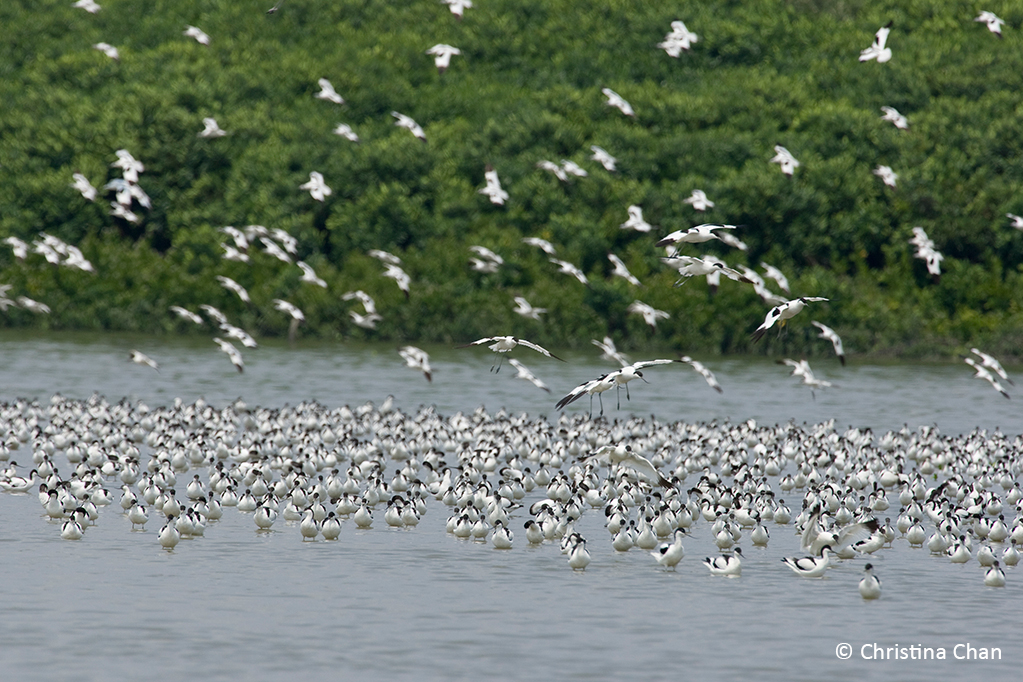As a starting place to bird watching, wetland is the best place to begin with. The fishpond area in the Deep Bay is one of the choices for beginners.
At the first time stepping into Nam Sang Wai, the scenery there is just like placing yourself in the Wildlife Channel. There are tens of thousands of birds flying in front of you. It is really an amazing scene.
Wetlands are the environment in which many birds live in. Birds called ‘waders’ refer to those not being good at swimming. Their legs, beak and neck are usually long that help them wade for foods in wetlands. They lower their beak while walking in shallow water or mudflats. This time, Pied Avocet is one of those to introduce.
In the fishpond area, Pied Avocet is one of the most recognizable waders. It is characterized by its black and white plumage and a unique upward-curved beak that will impress you.
Pied Avocet are mainly distributed from Europe to China, India and the south of Africa. In winter, they form large groups and migrate to the southeast coast of China, Tibet, Taiwan and some other places for wintering. Pied Avocet is a common winter visitor in Hong Kong, staying here from October to May of the following year.
The length of birds’ beaks determine the food they take in the wetland area. Long beaks allow them searching for food at different depths by inserting the beak into soil. Different lengths and curviness of beaks are further specialized in search of various preys. Long beaks and legs allow Pied Avocets walk at ease on the muddy environment to search for food. They swipe their beak sideways at the surface of water or mud to catch invertebrates and crustaceans like small fish, shrimps, snails, shellfish, insects and benthic organisms.




